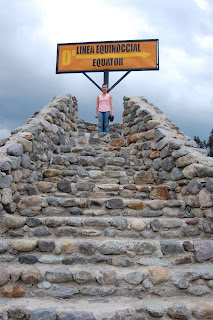November 3, 2009

After ½ a day in La Paz, I once again hit the road to see more of Bolivia. First, there was a 3 hour bus ride due south, no stops, with an American horror flick dubbed in Spanish playing at full volume. It was the oddest choice for a bus full of gringo tourists and local Bolivians.
The ride was flat across the Altiplano, looking much like the American Midwest, except that all the houses were made from mud-adobe brick. This is one of the enduring images of Bolivia, even though only 35% of the country is Altiplano; most of the country lies in the sub-tropical and tropical zones, and includes a large portion of Amazon jungle.
After finding my way through a couple dusty towns that looked for the most part like they had been bombed and left, I set off with a guide and driver across the Salar de Uyuni (salt flats) and into the Reserva Edoardo Avaroa, an ecological reserve in the southwest corner of Bolivia, near the border of Chile. This is a vast area of arid high desert, some of it so desolate that it reminds one of Mars or the moon (except that periodic springs appear from the earth, creating grassy oases for man and animal alike). A hardy relative of the llama – the vincuna – lives here, nibbling on microscopic grasses.

There are also a lot of birds – most notably, the flamingos (3 different types), which favor the large salty “lagunas” (very shallow depressions that catch a bit of water) scattered throughout the area. Sadly, the lagunas are slowly drying up – attributed to global warming – and may be gone in as little as 30 years.

The one constant feature of the entire trip south has been the fine dust that works its way into everything. Coupled with vicious afternoon and evening winds, the dust has become part of my wardrobe.
The first night we stayed at a rustic guesthouse in a little settlement, which was built right up against the rock, with walls of rock and adobe, and straw insulation for ceilings. The icy wind howled all around us, it stayed pretty warm despite below freezing temperatures (we found solid ice on all the streams in the morning).
The second night we stayed at a brand new rock and mortar hotel constructed truly in the middle of nowhere. It was actually quite nice – the nicest place I have stayed since leaving La Paz! They are relying on the tourists who visit the reserve for both an income and entertainment, I suspect, as it is a very lonely existence.




















































